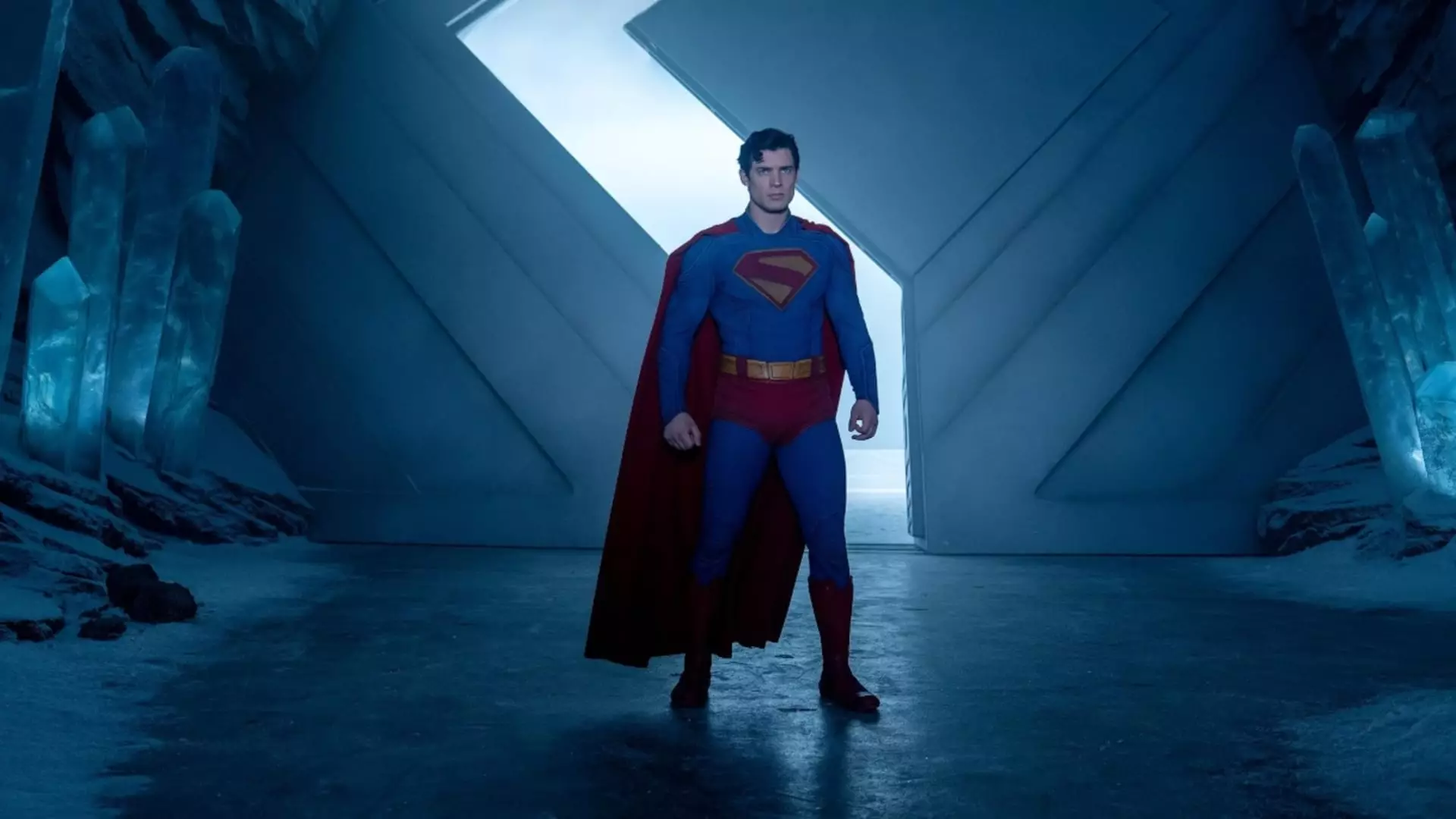Warner Bros.’ latest Superman film hit theaters with a notable splash, yet beneath its impressive preview numbers lies a complex narrative about the state of superhero cinema and the cautious optimism that surrounds it. Watching a film titled “Superman” gross $22.5 million on preview night is, on the surface, a strong feat—especially within the context of superhero movies, which are often judged heavily by box office benchmarks. However, a closer examination reveals that this particular performance is as much a reflection of industry fatigue as it is an indicator of renewed faith in the iconic hero. While it boasts the third-best preview opening among DC films, that still leaves it trailing behind the giants of the genre, such as “The Dark Knight Rises” or “Batman v. Superman,” both of which launched with substantially higher numbers in their respective eras.
This disparity signals more than just fluctuating fan interest; it indicates an industry still debating how to adapt to a saturated market. Superman’s preview success, while notable, might also be a wake-up call. Can a franchise—once a cornerstone of comic book cinema—still command the same excitement as in the past? Or are audiences becoming increasingly selective, craving stories that balance nostalgia with fresh relevance? The film’s opening is promising but ultimately remains a test of endurance for the character’s appeal in today’s fast-paced, franchise-driven box office climate.
Strategic Shifts and Risk Management in a Provocative Landscape
At the helm of Warner Bros.’ ambitious reimagining are James Gunn and Peter Safran—two seasoned creatives with a reputation for blending comic fidelity with market adaptability. Their mission to overhaul DC’s cinematic universe signals a kind of cautious optimism that favors measured risk-taking over reckless franchise expansion. The film’s initial projections, estimating a $130–140 million opening weekend, position it as a solid but not revolutionary hit—an outcome carefully calibrated to avoid the overexposure that doomed previous DC efforts like “Justice League.”
Critics’ favorable response, with an 83% Rotten Tomatoes rating, suggests alignment between the film’s narrative ambitions and audience expectations. However, critical praise does not naturally translate into box office dominance, especially when comic book audiences are growing more scrutinous and diverse in their tastes. Gunn and Safran appear aware that their long-term strategy hinges on reinvigorating core characters with more meaningful storytelling—bypassing the spectacle-for-spectacle’s-sake model that has often dominated superhero films. Their approach involves managing nostalgia’s power while steering the franchise toward cultural relevance, not just spectacle.
Yet, this cautious approach is not without peril. If the film underperforms relative to expectations, it risks reinforcing the narrative that superhero fatigue is finally setting in. On the other hand, strong word of mouth and sustained engagement could signal a definitive shift. Their plan to deploy “hopeful stories” with more depth could serve as a lifeline—if crafted skillfully and delivered with authenticity.
The Significance of Cultural Reception and Industry Dynamics
While immediate box office projections remain a key indicator of success, the true measure of Warner Bros.’ new direction might lie in the cultural impact and resonance of the film. In an era marked by social and political upheaval, Hollywood’s reliance on superhero movies as cultural touchpoints has been both a blessing and a curse. These narratives serve as escapism, but audiences increasingly demand stories that reflect their realities and complexities.
The reboot’s emphasis on hope and tradition may be an astute move, offering a familiar figure in Superman while subtly shifting the narrative tone. Yet, skepticism persists about whether this balancing act can sustain long-term engagement in a market that, historically, has seen superhero peaks followed by burnout. The fact that the film is the first major theatrical release from Gunn and Safran under their new regime suggests that Warner Bros. is testing waters cautiously, trying to appease both diehard fans and broader audiences.
Moreover, the industry’s broader landscape—marked by streaming dominance, shifting demographics, and technological innovations—means that box office numbers, while crucial, are no longer the singular metric of success. How Warner Bros. leverages this film’s performance to shape its future, and whether it can convert initial curiosity into sustained cultural relevance, will be critical factors in determining if this “rebirth” of Superman truly heralds a new era—or merely a fleeting moment of reassurance in an uncertain industry.


Leave a Reply